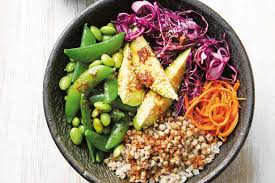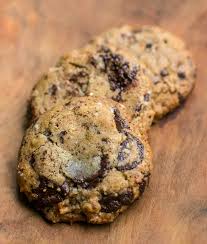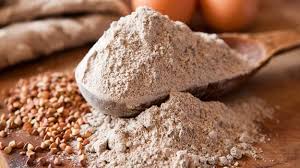What's In My Kitchen? Buckwheat!
- Maxine G. Klak, C.H.N.

- Mar 27, 2021
- 3 min read
Updated: Nov 21, 2021
What Is It?
Contrary to what its name may imply, buckwheat is NOT related to wheat. It is actually a fruit seed, and is related to rhubarb. Although consumed as cereal grains, buckwheat is one of the “pseudocereals” along with quinoa and amaranth that do not grow on grasses as cereals do.
Buckwheat has a fairly mild flavour, a little nutty, a little earthy, some say a wee bit bitter. Once cooked, the groats aren’t quite chewy, but not totally mushy either. The texture reminds me of barley.
Key Nutrients
Buckwheat is a good source of low-glycemic index (meaning it is unlikely to cause a spike in your blood sugar) carbohydrates, and once cooked is about 20% carbs by weight. It has a slightly lower fat content than quinoa. Buckwheat is a good source of fiber, both soluble and insoluble. It is 3-4% protein by weight once boiled as groats (more than quinoa), and contains 8 of the essential amino acids, making it a high quality protein. It is a particularly good source of the amino acids lysine and arginine.
Buckwheat is also a decent source of the B vitamins, and is high in certain mineral content, specifically manganese (digestion of protein, glucose regulation, thyroid activity), copper (formation of hemoglobin and collagen), magnesium (regulating muscle tone, energy production, prevention of tooth decay), iron (formation of hemoglobin, energy production, protein metabolism) and phosphorus (bone and tooth formation, energy production, cell and tissue repair). In fact, buckwheat is richer in minerals than rice, corn or wheat.
Key Health Benefits
Because of its high fiber content, buckwheat is beneficial to your digestive and immune systems (a healthy intestinal tract is needed for a healthy immune system)
Its high fiber content means that it is highly nutritious without a lot of calories. And of course, high fiber content is important for colon health.
Studies have shown that buckwheat can aid in the prevention of gallstones, particularly in post-menopausal women.
They contain higher levels of antioxidants than barley, oats, wheat or rye. In particular, the flavonoids (plant compounds) rutin and quercetin have been shown to reduce cancer risk, and reduce inflammation, high blood pressure and serum cholesterol.
Buckwheat is the richest food source of D-chiro-inositol, a soluble carbohydrate that reduces blood sugar and may benefit diabetes management.
How to Eat It
Buckwheat is typically available as groats, flour, or noodles – specifically soba noodles, seen in Japanese cooking. Groats are easy to cook – just use a 2:1 liquid to groats ratio, bring to a boil, then cover and simmer. I’ve also heard of buckwheat tea, but have never tried it. Some ways to enjoy buckwheat in your diet:
Use groats in soups or stews, as you would barley, etc.
Use buckwheat flour to bake muffins, cookies, breads or pancakes
Get some soba noodles and use cold in a salad, or hot with some stir-fried vegetables
Use groats as you would rice, quinoa, or other grains in your favorite casserole, as a side dish, or buddha bowl
Make a breakfast porridge using groats
Storage
Stored airtight in a cool, dry place, buckwheat should last for up to a year. Make sure when buying it that there is no sign of moisture. Buckwheat flour should be stored in the refrigerator, where it will keep for several months.
To get some recipes to try or more information on buckwheat, or if have any other nutrition related questions, do reach out. maxine@maginenutrition.com








Comments